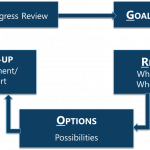How Do You Manage Your Life?
Learn the principle of permanence.
How Do You Manage Your Time?
Learn principles for time budgeting.
Time is your only finite resource. Take time to measure it.
Why?
Because we value what we measure and we measure what we value.
♦
Wise financial management requires a budget and simple ways to record expenses. Regretfully, few of us budget how or where we spend our time. The result is that most of us are too busy, rushed, and overloaded.
As you do with managing your cash flow, Here we will help you budget your time. There is only one basic difference, in time budgeting; there are no credit cards and no bank loans. You are only allowed to spend what you get each week.
Similar to financial budgeting here we will create two key categories and 6 sub-categories:
- YOUR PRIVATE LIFE focuses on your personal well-being. Out of the time you invest in your personal wellness, you can serve others. Prioritize your well-being in each of the following areas:
- Spiritual renewal – focuses on your relationship with God, for example, prayer, Bible study, church, and corporate worship…
- Physical wellness includes hygiene, meals, exercise, shopping, and laundry …
- Emotional well-being includes reading, music, fun with family, and friends, holidays…
- YOUR PUBLIC LIFE covers three types of paid or unpaid roles you play at work, at home or in your community. Here you consider the % of the time you allocate to each of the following three categories:
- Doing Work and Ministry: This is the area where you are expected to perform specific tasks and you are accountable to deliver specific outcomes, for example, preparing a sermon, doing maintenance, event planning, bookkeeping, and visiting the sick …
- Equipping Others for Work or Ministry: Your value contribution is directly related to how you influence someone else to do good work and deliver good results, for example, coaching, overseeing …
- Administration of Work or Ministry: These roles cover routine and predictable tasks and events such as administration, finances, checking employee reports, and filing and updating records…
USING THIS TOOL:
Download the About Time Excel Workbook.
Based on the above video instructions the attached diagram illustrates the main parts of your time budgeting system.
The Excel workbook provides five excel worksheets.
- INTRODUCTION and DESIRED BUDGET: Following the introduction, based on the above diagram, this page is where you enter how you wish to spend your time.
- PRIVATE and PUBLIC sheets: Here you enter HIGH-LEVEL ESTIMATES of where you normally spend your time in an average week. Here you also make allowances for holidays and other variables.
- SUMMARY sheet: This provides diagrams comparing your desired state to your present state. This comparison helps you see where you need adjustments and set realistic objectives.
- WEEKLY BUDGET sheet: Here is your plan for what you hope to do and when.
Important Notes:
- As you become familiar with this tool, periodically go back and enhance your input and update your budget in response to your changing needs.
- This is not a time management tool. It is a thinking and communication tool. Share it with your important people so they can support you in setting realistic expectations of yourself and how you collaborate with them.



